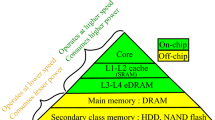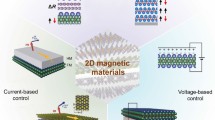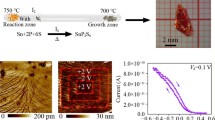Abstract
ZnO is a very promising material for spintronics applications, with many groups reporting room-temperature ferromagnetism in films doped with transition metals during growth or by ion implantation. In films doped with Mn during pulsed laser deposition (PLD), we find an inverse correlation between magnetization and electron density as controlled by Sn-doping. The saturation magnetization and coercivity of the implanted single-phase films were both strong functions of the initial anneal temperature, suggesting that carrier concentration alone cannot account for the magnetic properties of ZnO:Mn and factors such as crystalline quality and residual defects play a role. Plausible mechanisms for ferromagnetism include the bound magnetic polaron model or exchange that is mediated by carriers in a spin-split impurity band derived from extended donor orbitals. The progress in ZnO nanowires is also reviewed. The large surface area of nanorods makes them attractive for gas and chemical sensing, and the ability to control their nucleation sites makes them candidates for microlasers or memory arrays. Single ZnO nanowire depletion-mode metal-oxide semiconductor field effect transistors exhibit good saturation behavior, threshold voltage of ∼−3 V, and a maximum transconductance of 0.3 mS/mm. Under ultraviolet (UV) illumination, the drain-source current increased by approximately a factor of 5 and the maximum transconductance was ∼5 mS/mm. The channel mobility is estimated to be ∼3 cm2/Vss, comparable to that for thin film ZnO enhancement mode metal-oxide semiconductor field effect transistors (MOSFETs), and the on/off ratio was ∼25 in the dark and ∼125 under UV illumination. The Pt Schottky diodes exhibit excellent ideality factors of 1.1 at 25°C, very low reverse currents, and a strong photoresponse, with only a minor component with long decay times thought to originate from surface states. In the temperature range from 25°C to 150°C, the resistivity of nanorods treated in H2 at 400°C prior to measurement showed an activation energy of 0.089 eV and was insensitive to ambient used. By contrast, the conductivity of nanorods not treated in H2 was sensitive to trace concentrations of gases in the measurement ambient even at room temperature, demonstrating their potential as gas sensors. Sensitive pH sensors using single ZnO nanowires have also been fabricated.
Similar content being viewed by others
References
S. von Molnar and D. Read,Proc. IEEE 91, 715 (2003).
H. Ohno,J. Vac. Sci. Technol. B 18, 2039 (2000).
T. Dietl,Semicond. Sci. Technol. 17, 377 (2002).
S.J. Pearton et al.,J. Appl. Phys. 93, 1 (2003).
S.J. Pearton, C.R. Abernathy, D.P. Norton, A.F. Hebard, Y.D. Park, L.A. Boatner, and J.D. Budai,Mater. Sci. Eng. R40, 137 (2003).
T. Dietl, H. Ohno, F. Matsukura, J. Cibert, and D. Ferrand,Science 287, 1019 (2000).
K. Sato and H. Katayama-Yoshida,Semicond. Sci. Technol. 17, 367 (2002).
W. Prellier, A. Fouchet, B. Mercey, and J. Phys,Condensed Matter 15, R1583 (2003).
T. Fukumura, Y. Yamada, H. Toyosaki, T. Hasegawa, H. Koinuma, and M. Kawasaki,Appl. Surf. Sci. 131, 453 (2004).
Y. Matsumoto, M. Murakami, T. Shono, T. Hasegawa, T. Fukumura, M. Kawasaki, P. Ahmet, T. Chikyow, S. Koshihara, and H. Koinuma,Science 291, 854 (2001).
Y. Matsumoto, R. Takahashi, M. Murakami, T. Koida, X.J. Fan, T. Hasegawa, T. Fukumura, M. Kawasaki, S.Y. Koshihara, and H. Koinuma,Jpn. J. Appl. Phys. 40, L1204 (2001).
K. Sato and H. Katayama-Yoshida,Jpn. J. Appl. Phys. 39, L555 (2000).
K. Ueda, H. Tabata, and T. Kawai,Appl. Phys. Lett. 79, 988 (2001).
S.G. Yang, A.B. Pakhomov, S.T. Hung, and C.Y. Wong,IEEE Trans. Magn. 38, 2877 (2002).
N. Wakano, Y. Fujimura, N. Morinaga, A. Abe, N. Ahida, and T. Ito,Physica E 10, 260 (2001).
T. Fukumura, Z.W. Jin, A. Ohtomo, H. Koinuma, and M. Kawasaki,Appl. Phys. Lett. 75, 3366 (1999).
M. Berciu and R.N. Bhatt,Phys. Rev. Lett. 87, 108203 (2001).
T. Wakano, N. Fujimura, Y. Morinaga, N. Abe, A. Ashida, and T. Ito,Physica C 10, 260 (2001).
T. Fukumura, Z. Jin, A. Ohtomo, H. Koinuma, and M. Kawasaki,Appl. Phys. Lett. 75, 3366 (1999).
S.W. Jung, S.-J. An, G.-C. Yi, C.U. Jung, S.-I. Lee, and S. Cho,Appl. Phys. Lett. 80, 4561 (2002).
D.P. Norton, S.J. Pearton, A.F. Hebard, N. Theodoropoulou, L.A. Boatner, and R.G. Wilson,Appl. Phys. Lett. 82, 239 (2003).
D.P. Norton et al.,Appl. Phys. Lett. 83, 2294 (2003).
K. Sato and H. Katayama-Yoshida,Mater. Res. Soc. Symp. Proc. 666, F4.6.1 (2001).
S.R. Shinde et al.,Phys. Rev. B: Condens. Matter Mater. Phys. 67, 115211 (2003).
A. Punnoose, M.S. Seedra, W.K. Park, and J.S. Moodera,J. Appl. Phys. 93, 7867 (2003).
H. Nakagawa and H. Katayama-Yoshida,Jpn. J. Appl. Phys. 40, L1355 (2001).
M. Berciu and R.N. Bhatt,Physica B 312/313, 815 (2002).
A.C. Durst, R.N. Bhatt, and P.A. Wolff,Phys. Rev. B: Condens. Matter Mater. Phys. 65, 235205 (2002).
J.-H. Kim, H. Kim, D. Kim, Y.-E. Ihm, and W.-K. Choo,J. Appl. Phys. 92, 6066 (2002).
H. Saeki, H. Tabata, and T. Kawai,Solid State Commun. 120, 439 (2001).
Y.M. Cho, W.-K. Choo, H. Kim, D. Kim, and Y.-E. Ihm,Appl. Phys. Lett. 80, 3358 (2002).
H.J. Lee, S.Y. Jeong, C.R. Cho, and C.H. Park,Appl. Phys. Lett. 81, 4020 (2002).
P. Sharma, A. Gupta, K.V. Rao, F.J. Owens, R. Sharma, R. Ahuja, J.M. Osorio Guillen, B. Johansson, and G.A. Gehring,Nature Mater. 2, 673 (2003).
S.J. Hahn, J.W. Song, C.H. Yang, S.H. Park, J.H. Park, Y.H. Jeong, and K.W. Rhie,Appl. Phys. Lett. 81, 4212 (2002).
K. Rode, A. Anane, R. Mattana, J.-P. Contour, O. Durand, and R. LeBourgeois,J. Appl. Phys. 93, 7676 (2003).
N. Theordoropoulou et al. (to be published).
Author information
Authors and Affiliations
Rights and permissions
About this article
Cite this article
Pearton, S.J., Norton, D.P., Heo, Y.W. et al. ZnO spintronics and nanowire devices. J. Electron. Mater. 35, 862–868 (2006). https://doi.org/10.1007/BF02692541
Received:
Accepted:
Issue Date:
DOI: https://doi.org/10.1007/BF02692541




